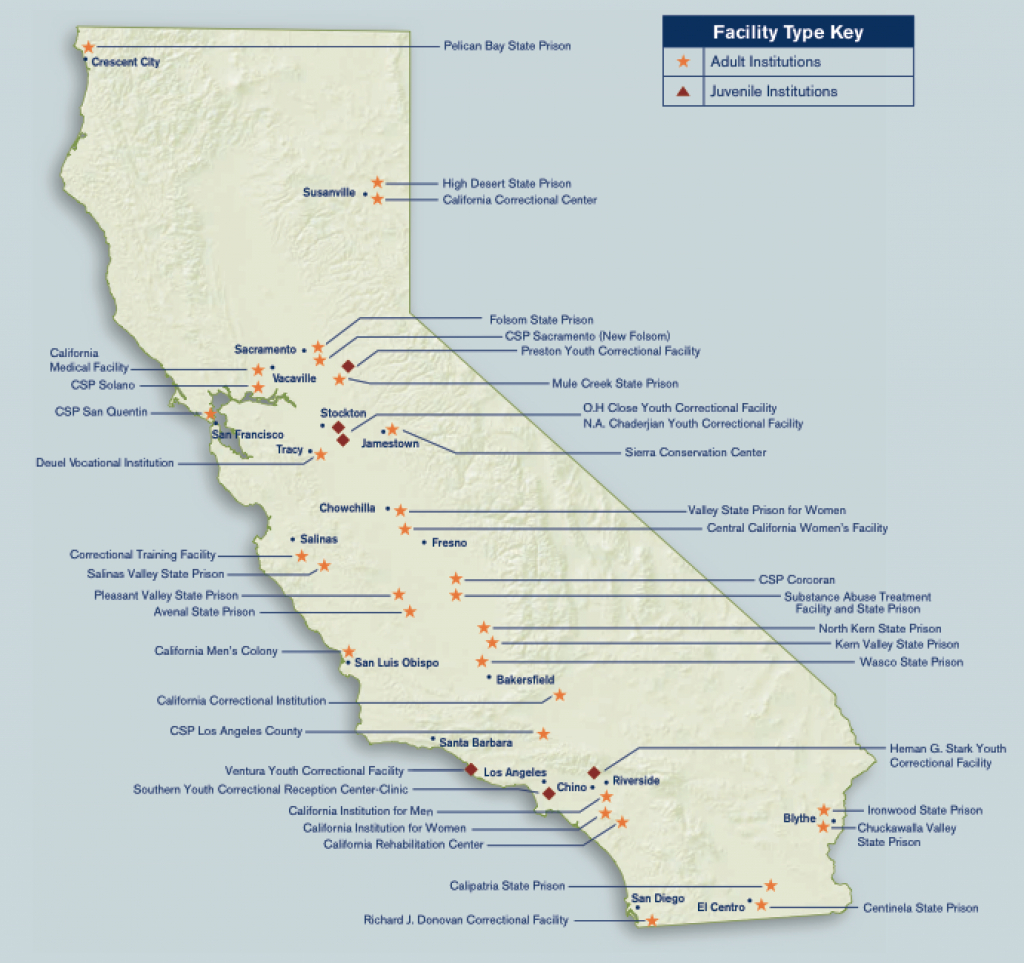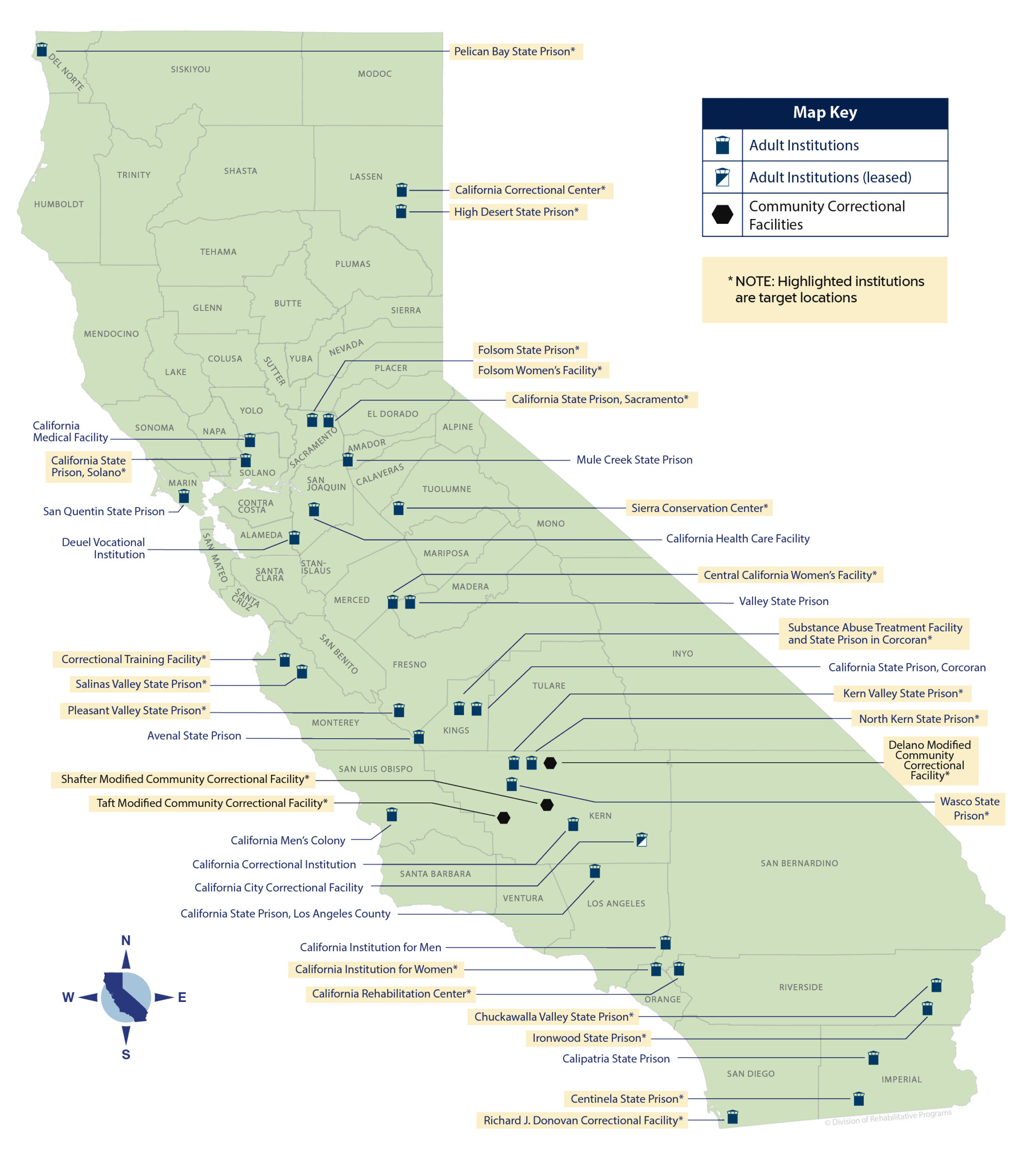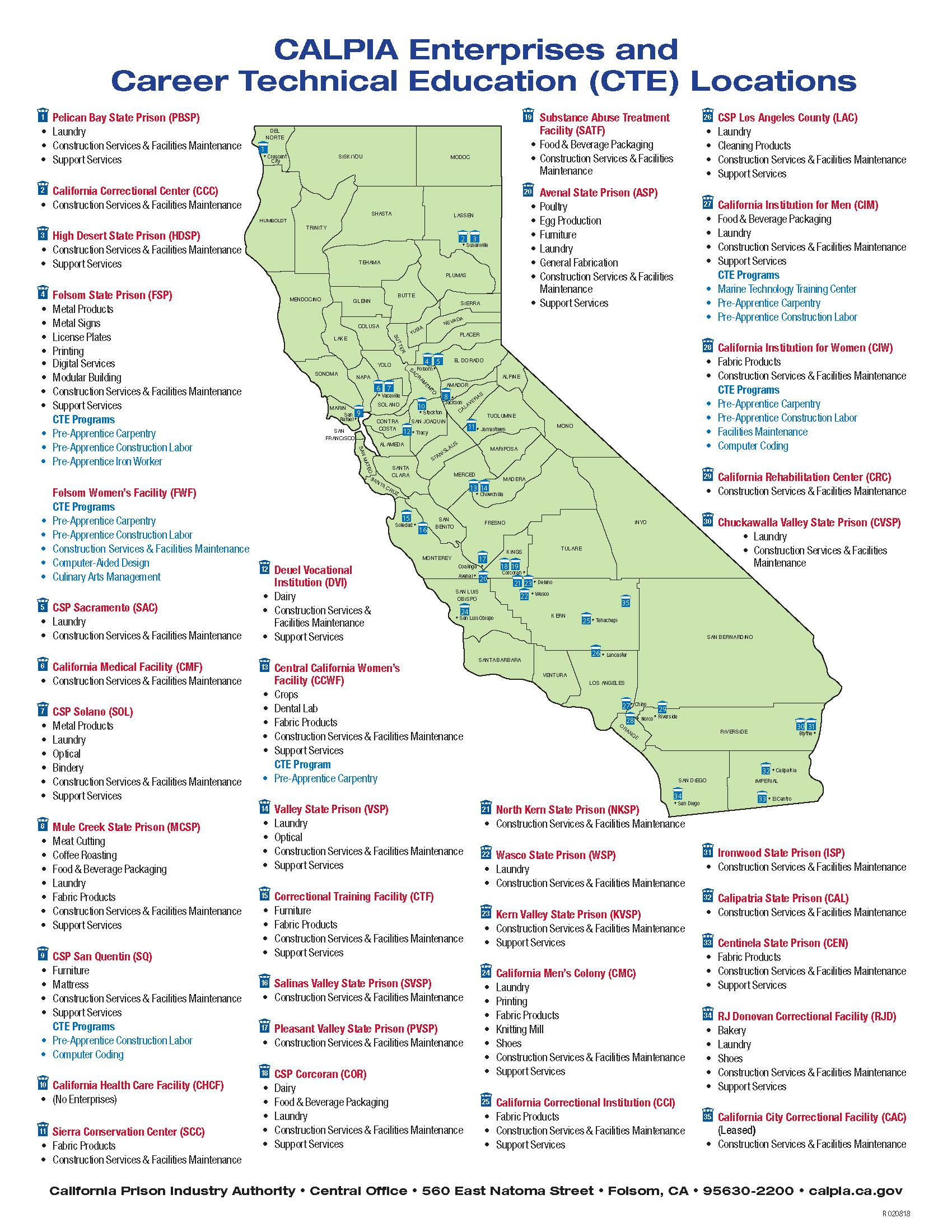California's Prison Map: A Comprehensive Guide To The State's Correctional Facilities
California's prison system is one of the largest and most complex in the United States. If you're looking for a detailed map of prisons in California, you've come to the right place. In this article, we'll take you on a journey through the state's correctional facilities, providing you with all the information you need to understand the layout and structure of California's prison network. Let's dive in and explore this fascinating yet often misunderstood world.
Now, before we get too deep into the nitty-gritty, let's set the stage. California's prison map isn't just a collection of dots on a chart; it's a reflection of the state's efforts to manage its growing inmate population. The system has faced numerous challenges over the years, from overcrowding to reform initiatives, and understanding the map is crucial for anyone interested in criminal justice or public policy.
As we explore the prisons in California map, we'll touch on historical context, current conditions, and future developments. Whether you're a researcher, a student, or simply someone curious about the state's correctional landscape, this article will give you the tools to navigate the complexities of California's prison system. So, buckle up and let's get started!
Read also:Meet Freda Paynes Exhusband Singer Gregory Abbott A Journey Through Love Music And Life
Understanding the Prisons in California Map
Overview of the State's Correctional Network
When you look at the prisons in California map, you're seeing a snapshot of one of the most extensive correctional systems in the country. The California Department of Corrections and Rehabilitation (CDCR) oversees more than 35 state prisons, each with its own unique role and characteristics. These facilities range from maximum-security prisons housing the most dangerous offenders to minimum-security camps that focus on rehabilitation and community service.
One of the key things to note is how the prisons are distributed across the state. You'll find facilities in urban centers like Los Angeles and San Francisco, as well as in more rural areas such as the Central Valley. This strategic placement helps manage logistics, staffing, and transportation challenges. Plus, it ensures that inmates are housed closer to their families, which can play a vital role in their rehabilitation process.
Key Features of the California Prison Map
So, what makes the prisons in California map so intriguing? For starters, the sheer diversity of facilities is impressive. From the infamous San Quentin State Prison, where many death row inmates are housed, to the lesser-known correctional centers in remote areas, each location tells its own story. The map also highlights the varying security levels, from medium to maximum, and the specialized programs offered at each site.
Another interesting aspect is how the map reflects California's commitment to reform. Over the years, the state has introduced numerous initiatives aimed at reducing recidivism and improving inmate outcomes. These efforts are evident in the facilities' layouts, programming options, and partnerships with local communities. It's a testament to the evolving nature of the prison system and its adaptation to modern challenges.
The History Behind California's Prisons
From the 19th Century to Today
To truly understand the prisons in California map, you need to delve into its history. The first state prison in California, San Quentin, opened its doors in 1852, just two years after the state joined the Union. Back then, the prison system was relatively small and focused primarily on housing inmates. Fast forward to today, and you'll see a sprawling network designed to address the complexities of modern society.
Throughout the years, California's prisons have undergone significant changes. The 1970s and 1980s saw a surge in incarceration rates due to tough-on-crime policies, leading to overcrowding and strained resources. This period also marked the construction of several new facilities to accommodate the growing inmate population. However, the challenges didn't stop there. In recent decades, the state has been working to address these issues through policy reforms and innovative solutions.
Read also:Kim Novak The Hollywood Legendrsquos Journey Beyond The Silver Screen
Types of Prisons in California
Maximum-Security Facilities
When people think of prisons in California, they often imagine the high-security institutions that dominate the headlines. These maximum-security facilities, such as Pelican Bay State Prison and Corcoran State Prison, house the most dangerous offenders, including those on death row. The level of security is intense, with multiple layers of fencing, surveillance cameras, and armed guards patrolling the perimeter.
Life inside these prisons is heavily structured, with strict routines and limited privileges for inmates. The focus is on maintaining order and ensuring the safety of both staff and prisoners. Despite the challenges, these facilities also offer educational and vocational programs aimed at preparing inmates for reintegration into society upon release.
Medium and Minimum-Security Prisons
Not all prisons in California are as intense as the maximum-security ones. Medium-security facilities, like Kern Valley State Prison and Valley State Prison, provide a slightly more relaxed environment while still maintaining a high level of supervision. These prisons cater to inmates with lower risk profiles and often have more extensive programming options.
On the other end of the spectrum, minimum-security camps, such as Sierra Conservation Center and R.J. Donovan Correctional Facility, offer even greater freedom for inmates. These facilities often focus on rehabilitation and community service, allowing inmates to contribute positively to society while serving their sentences.
Challenges Facing California's Prisons
Overcrowding and Resource Allocation
One of the biggest challenges facing California's prison system is overcrowding. Despite recent efforts to reduce the inmate population, many facilities still operate above capacity. This strain on resources leads to issues such as limited access to programs, inadequate healthcare, and increased tension among inmates and staff.
The state has taken steps to address these problems, including implementing realignment policies that shift some offenders to county jails and expanding alternatives to incarceration. However, the journey toward a sustainable solution is ongoing, and the prisons in California map continues to evolve as new strategies are introduced.
Reform Initiatives and Future Developments
Innovative Solutions for a Changing Landscape
California is at the forefront of prison reform, and its efforts are reflected in the prisons in California map. Recent initiatives have focused on reducing recidivism, improving inmate conditions, and promoting rehabilitation over punishment. Programs such as education, mental health services, and substance abuse treatment are becoming more prevalent in correctional facilities across the state.
Looking ahead, the future of California's prison system holds promise. Advances in technology, such as telehealth services and virtual programming, are being explored to enhance inmate access to resources. Additionally, partnerships with community organizations and educational institutions are being strengthened to provide inmates with the skills they need to succeed upon release.
Data and Statistics
By the Numbers: Understanding California's Prisons
Let's take a look at some key statistics to paint a clearer picture of the prisons in California. As of the latest data, the state houses approximately 115,000 inmates across its correctional facilities. This number has been gradually declining due to policy reforms and alternative sentencing options. However, challenges such as overcrowding and budget constraints persist.
Here are some bullet points to highlight the most important stats:
- California operates over 35 state prisons.
- The average cost per inmate per year is around $80,000.
- Recidivism rates have decreased in recent years, thanks to increased focus on rehabilitation.
- Approximately 30% of inmates are housed in facilities operating above capacity.
Notable Prisons in California
San Quentin State Prison
No discussion of prisons in California would be complete without mentioning San Quentin. Established in 1852, it's the oldest prison in the state and one of the most famous in the world. San Quentin houses California's death row and has been the site of numerous high-profile cases. Despite its reputation, the facility also offers a range of programs aimed at rehabilitation and self-improvement for inmates.
Pelican Bay State Prison
Another notable institution is Pelican Bay State Prison, located in Crescent City. Known for its high-security conditions, this facility houses some of the most dangerous offenders in the state. Pelican Bay is also infamous for its use of solitary confinement, a practice that has sparked controversy and debate over the years.
How to Navigate the Prisons in California Map
Tools and Resources for Exploration
If you're interested in exploring the prisons in California map further, there are several tools and resources available. The California Department of Corrections and Rehabilitation provides an interactive map on its website, allowing users to view facility locations, capacities, and other relevant information. Additionally, third-party websites and apps offer detailed insights into the state's correctional network.
For those looking to visit a specific facility, it's important to check the visiting policies and procedures beforehand. Each prison has its own rules regarding visitation, and advance planning is essential to ensure a smooth experience. Whether you're a researcher, a family member, or simply someone interested in the topic, these resources can help you navigate the complexities of California's prison system.
Conclusion
In conclusion, the prisons in California map represents a complex and evolving system that plays a crucial role in the state's criminal justice landscape. From its historical roots to its modern challenges and reforms, the map offers a fascinating glimpse into the world of correctional facilities. By understanding the layout, history, and future developments of California's prisons, we can gain valuable insights into the state's efforts to address some of society's most pressing issues.
So, what's next? If you found this article informative, we encourage you to share it with others who may be interested in the topic. Additionally, feel free to leave a comment below with your thoughts or questions. Together, we can continue the conversation about California's prison system and its impact on society. Stay curious, and keep exploring!
Table of Contents
Article Recommendations


